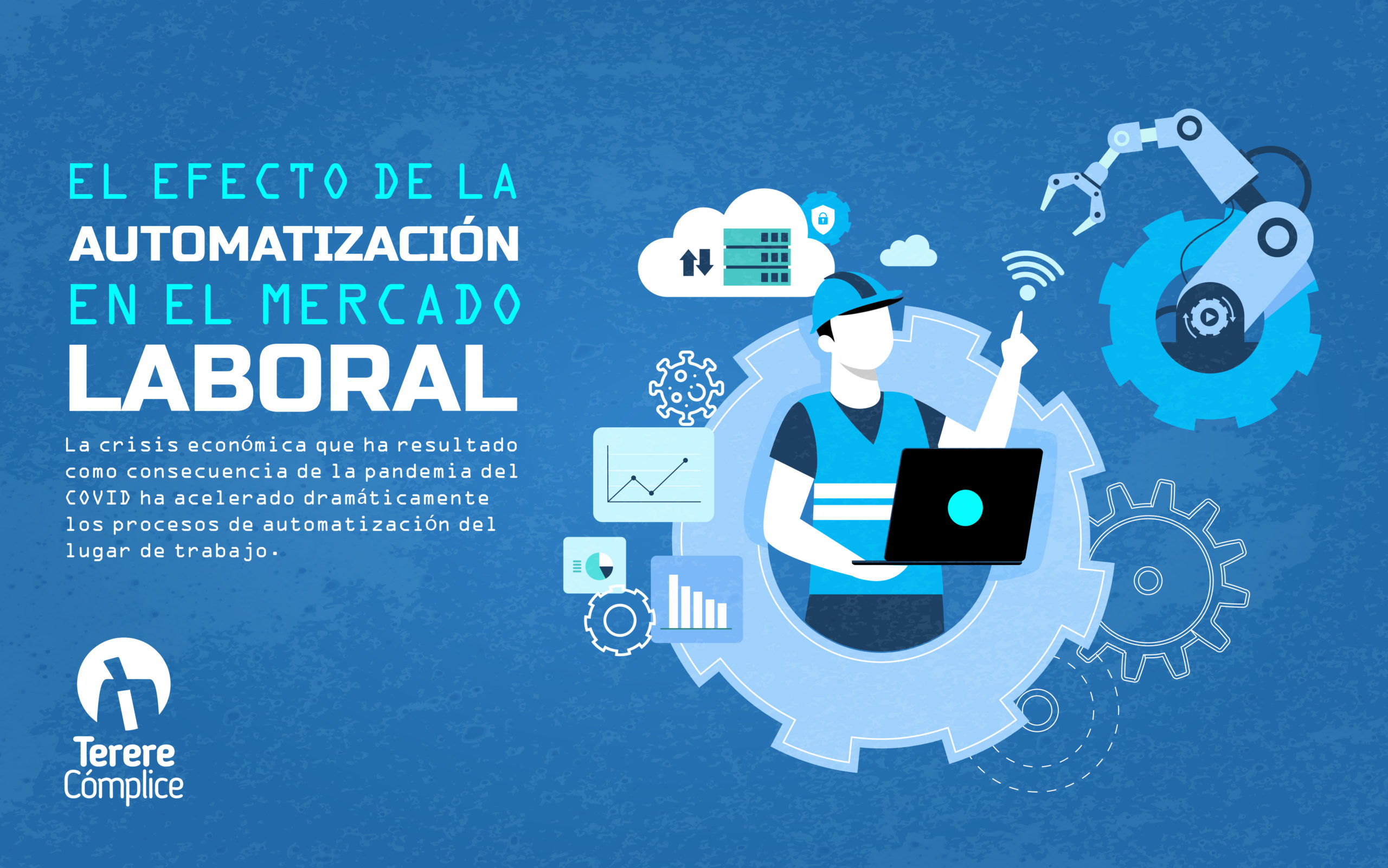
Special series by Terere Cómplice “The future of work and the jobs of the future”
By Claudia Pompa.
The economic crisis resulting from the COVID pandemic has dramatically accelerated the processes of workplace automation. In this context, automation means the application of technology, computer programs, robotics or other processes to achieve results with minimal human input. Although technological change is likely to both create and destroy jobs, recent studies have shown that in certain economies automation could increase unemployment even as the total number of job openings in the economy remains the same. This is due to the existing mismatches between the skills of unemployed workers and the skills required to fill vacant positions. For example, an unemployed driver is unlikely to qualify for open data analyst positions, illustrating the paradoxical situation that unemployment increases even as job vacancies remain open.
The Organization for Economic Cooperation and Development (OECD) estimates that approximately 14% of jobs in member countries have been automated, while another 32% are at high risk of being partially automated. In developed economies, evidence shows that low-skilled workers face a particularly bleak future. Not only are many low-skilled jobs at risk of being automated, but at the same time the resulting displaced workers will have to enter a job market where many of their formerly accessible alternative employment options have also been automated already or at risk of becoming automated in the near future. For example, a person who works as a retail cashier could be let go if the store installs self-checkout stations. While this person might then find a job in customer service, such positions are also at high risk of being automated by specially designed customer service bots (chatbots).
The lack of action or any public policy aimed at solving these problems leaves us faced with a future characterized by income polarization, increased inequality, increased pressure on the public sector, and social tension.
Globally, the current situation reflects the long decline in the importance of low- and medium-skilled labor. These workers, once essential to economic growth, suffered from reduced status due to the advance of the fourth industrial revolution (4RI) and the emergence of the knowledge economy. In this new economy, companies have turned their focus to raising productivity through labor-saving techniques and hiring highly-skilled workers who can help drive innovation and technological development. In most cases, these jobs require at least a college degree, all the while demand for unskilled workers has in many cases declined, along with their respective incomes.
In Latin America these phenomena have developed somewhat differently. New technologies have been adopted at a slower pace due to the abundance of unskilled labor, which has led a less polarized labor market so far. Approximately half of the region’s workforce is made up of informal workers without a university degree. In countries such as Bolivia, Nicaragua, Paraguay, and Peru, informal workers represent more than two-thirds of the workforce.
Even though in Latin America, unlike in other regions, the impact of COVID-19 is less likely to accelerate automation due to the prevalence of informality and the abundance of unskilled labor, high costs of capital investment, and barriers to technology diffusion, the pandemic will likely drag down wages and increase the number of low-skilled job seekers.
This situation explains why so many workers worldwide are disillusioned and afraid that their income and their children’s income will continue to stagnate or even decline. It also helps explain why such workers increasingly experience a general sense of abandonment, dissatisfaction, and injustice. An economy in which the winner takes all and offers only limited access to the middle class is a recipe for democratic malaise.
The lack of action or any public policy aimed at solving these problems leaves us faced with a future characterized by income polarization, increased inequality, increased pressure on the public sector, and social tension. This is not an inevitable future; on the contrary, the COVID pandemic has provided us with the perfect opportunity to rebuild better, more inclusive economies and labor markets.
Policies targeting expansions of worker protections with portable benefits, investments in workforce development and continuing education programs, and alliances with the private sector to develop active, intelligent labor policies that create high-productivity, high-income jobs are just a few examples of the tools that politicians have at their disposal.
Image: Lissette Salguero
